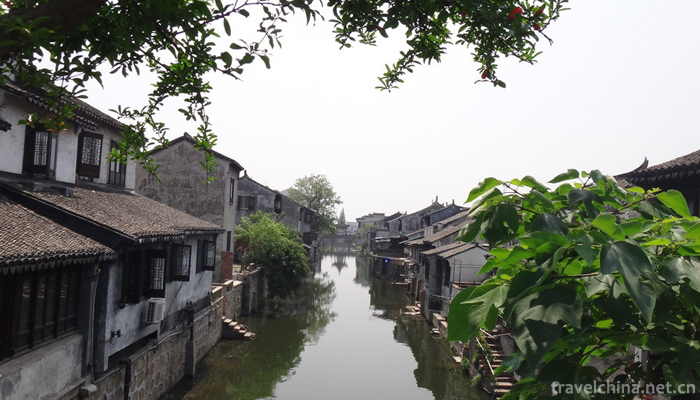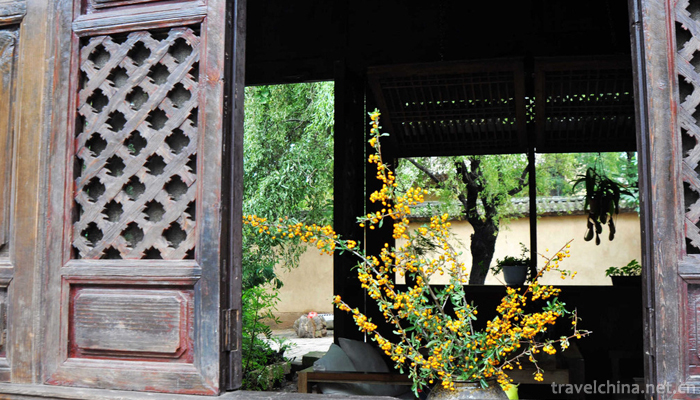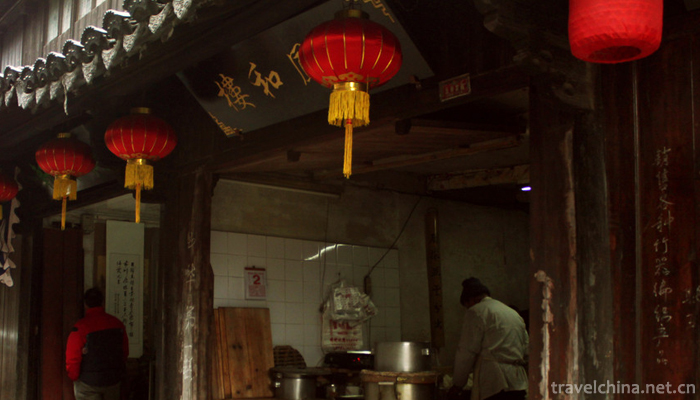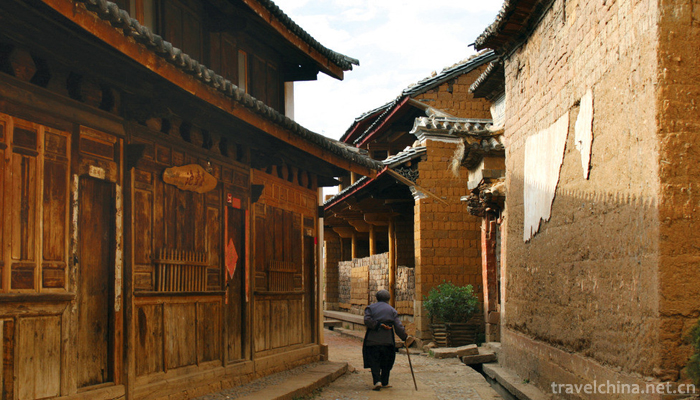Ancient town of Shaxi
Shaxi is located in the southeast of Jianchuan in Dali, Yunnan Province, China. It is located in the southeast of Jinsha River, Lancang River and Nujiang River Parallel Nature Reserve. It is located between Dali Scenic Spot and Lijiang Ancient City. The famous Shibaoshan is here.
A real old town in the ancient town of Shaxi is antique and remains the oldest architectural feature. Ancient temples, ancient theatres, ancient shops, horse shops, ancient red sandstone Flagstone streets, century-old trees, ancient lanes, ancient Zhaimen.
Shaxi is a historic town with a long history. It can be traced back to the spring and Autumn period and the Warring States period more than 2400 years ago. Ancient tombs in Aofengshan and the Huacongshan copper mine site in the east of Shaxi tell us silently that Shaxi formed a bronze smelting and manufacturing base centered on Heiwei River more than 400 B.C. At that time, Shaxi ancestors had a higher bronze smelting technology and became one of the birthplaces of bronze culture in Yunnan.
During the Tang and Song Dynasties, Shaxi, as an ancient town on the ancient road of Nanzhao and Dali, played an active role. It is well known that Buddhism had a profound influence on Nanzhao and Dali, which made the Nanzhao and Dali cultures take on a strong religious color. Shaxi was one of the witnesses of the spread of Buddhist culture at that time. The Grottoes excavated in the period of Nanzhao and Dali along the territory of Shadengjing and Shizhongshan were the best illustration. That is to say, in the Tang and Song Dynasties, Shaxi was very prosperous because it was located in Nanzhao, Dali, which led to Shadengjing and Shizhongshan Grottoes. It was a land terminal on the ancient road of economic and cultural exchanges between Tang and Tubo.
Dong Zengxu, a Bai cultural scholar and an expert on history, culture and religion and art in Nanzhao and Dali, said that Shaxi ancient town centered on Sideng Street and developed Sifang Street. Xingjiao Temple was the core of Sideng Street.
Xing Jiao temple was built in Ming Yongle for thirteen years, and it has a history of nearly 600 years. It is the largest, most typical and most representative Buddhist Tantric "Azari" monastery in China. The murals of Ming Dynasty preserved in Xingjiao Temple are deeply influenced by the painting style of Central Plains, and have strong local national characteristics. They are the treasures of ancient Bai painting art in the southwestern frontier of China. Xing Jiao temple is a national key cultural relic protection unit. Its outstanding architectural art in the Ming Dynasty is amazing.
The architectural features of the hall of the Xing Jiao temple are 18 meters long, 14.5 meters deep and 19 meters high. Beams and pillars are plump, vigorous and dignified, the bucket arch is thick and generous, 12 pillars are slightly inclined, with two beams in the middle, pierced to support the roof, the gravity of the building is reasonably decomposed into the bucket arch and column wall, forming such a huge open space in the hall, and there is no one pillar in the middle. Moreover, the building structure has strong seismic performance. As we all know, Yunnan is an earthquake-prone area, but after 600 years of earthquake damage, it stands tall, without deformation.
The beams and columns of these buildings are exquisite and complex, and their workmanship is atmospheric. They not only retain the style of ancient buildings in the Song and Yuan Dynasties, but also are deeply influenced by the architectural style of Bai nationality and the architectural style of Tibetan temples.
The tea horse ancient road passes through Sichuan, Yunnan, north connects Tibet, India, Nantong Southeast Asia. The ancient road passes through Dali, Lijiang, Shangri-La and other places in Yunnan. Between these famous towns, there is an ancient market - Shaxi Temple Street.
The ancient tea-horse road, as a major channel outside the three major silk roads for China's foreign exchanges, is called "the ancient tea-horse road" because the transportation process of the trade mainly passes through the horse gangs, whose main trading objects are tea and horses. Shaxi is located between Dali and Lijiang. It is a land terminal on the ancient tea-horse road between Yunnan and Tibet. In addition to the excavation of Grottoes in Nanzhao and Dalian, Shaxi has become a trading center on the ancient tea-horse road and a center of Buddhist cultural activities in Nanzhao-Dali. It is an ancient town which integrates commerce and Buddhist culture. Maybe God loved Shaxi very much. After the Tang Dynasty, four salt wells with Shaxi as the center, namely, Misha Salt Well, Qiaohou Brine Well, Yunlong Nordeng Salt Well and Lanzhou Laji Salt Well, were gradually built, which added to the development of Shaxi. The ancient town, as the nearest ancient tea-horse road fair, leaped into being. The salt capital of the ancient tea-horse road has become the distribution center of salt supply in Tibet and northwest Yunnan, and has gradually become another important commodity after the tea and horse trade. The discovery and exploitation of salt wells have made Shaxi a pivotal salt capital in terms of its role as an overland Wharf on the ancient Chama Road, thus further promoting the development of Shaxi's economy and culture and making Shaxi one of the most economically developed areas on the ancient Chama Road, such as agriculture, industry, commerce and transportation. The rise and rise of economy will inevitably promote the development of national religion and culture. Shaxi has become a gathering place of Buddhist culture for a while, thus promoting Shaxi area to become the main area of Buddhist Tantric religious activities in Erhai area, thus making Shaxi an ancient town with developed economy and trade and prosperous culture.
Shaxi, an ancient town, has gone through a process of development, growth, glory and decline, leaving only silent stone bridges, ancient roads and ancient streets whispering about its past. Only the Heihui River silently brings Shaxi's glorious journey on the Tea-Horse Road into the distant sea.
Millennium market Temple
Siding Deng Sifang street is the soul and core of Shaxi. It is the place where Shaxi deals in commerce and trade. It is located in the center of Shaxi Dazi Aofeng Mountain Tau position, Heihui River "S" large bend top, near the mountains and rivers, is an excellent geographic location of geomancy treasure. It is a thousand-year-old market with temples, ancient theatres, shops, horse shops, open red sandstone Flagstone streets, centuries-old trees, ancient alleys and villages. The world Memorial architectural foundation experts have been praised as "the only surviving ancient market on the tea horse road".
Historically, Sifang Street was called Nantang. In the late Ming Dynasty, it was named Sifang Street because of Xingjiao Temple. Temple, refers to the temple of education, Deng is Bai language, meaning the place. Located near the Xing Jiao temple, it is a square street. This is the origin of Sifang Deng Sifang street.
The Yujin Bridge, an ancient stone bridge on the Bank of the Heihui River, is about 100 meters along the ancient road. A village gate made of adobe appears in front of us. This is the Dongzhaimen Gate, which is called "street gate" by the villagers, indicating that the entrance to this gate is the market. The village gate, made of adobe, looks a bit shabby, rustic and narrow compared with the tall, powerful stone gates elsewhere, but it shows the world the appearance of the gate of the ancient tea-horse road fair - only two horses can pass through the adobe wall door at the same time. There are three gates in Sidenggu Street: Dongzhaimen (leading to Dali area), Nanzhaimen (connecting the salt wells of Western Yunnan to the south of the town) and Beizhai (leading to Tibet).
Passing through the Zhaimen, a narrow, deep old lane came leisurely, and the old shops on both sides of the lane quietly stood on both sides. The thick commercial atmosphere is coming to us, so that people can not help thinking of the ancient caravan entering the village gate through the roadway. Today, there are three ancient alleys in the temple which are still called "street alleys" by the local people, meaning that the first business in the history of the temple was done in the alleys. Today, the three lanes are basically completely preserved, as if they were back to the old Tea-Horse Lane yesterday, giving people a sense of reminiscence of the past, associative and elegant.
At the end of the long and narrow roadway is the Sifang street, the economic and trade center of siding. Sifang Street is like a curved ruler. It is about 300 meters long from north to South and 100 meters wide from east to west. The North Street is about 100 meters long from east to west and 50 meters wide from north to south. The whole street is paved with red sandstone slabs. There are two ancient locust trees in the center of the street. On the east side of Sifang Street there are ancient theatres sitting in the East and on the west side there are Xingjiao temples sitting in the West and on the east. They echo each other, dividing the streets into two halves of the north and the south. There are shops and horse shops all around the street. Three ancient lanes extend to all sides of the ancient town.
Sifang Street in Sideng used to have a street every three days. It was very busy. Horse gangs from all over the country came to the old street to put up shop one after another in the afternoon the day before. The performances of Dongjing music, Bai tyrant whip dance and folk songs began in the afternoon before the street. The performances lasted for two days and lasted for two nights. The local people called them "two nights and two days play". Sifang Street in Sideng has the most commercial flavor, reflecting the construction of Tea Horse Road Fair is a commercial building which is densely spread around the street and around the roadway. It is a guarantee that the entire street will last for thousands of years. The front and rear horse shop is simply to say that the houses near the street and the lane are opened into shops, which are mainly used for business or rent to others. The houses and courtyards behind are opened into horse shops for horse gangs, merchants, stocks and horses traveling from south to north. The commercial layout around Sifang Street and on both sides of the three old lanes is basically intact and preserved, making it the only market town that survived the Tea-Horse Ancient Road Fair.
The ancient stage is the most distinctive building on Sifang Street. It is located on the east side of Sifang Street, facing the street in the center of the building complex. It forms a central axis with the temples and gates of Xingjiao Temple in the west. It divides the ancient square street into the north and the south, thus providing a physical sign for various business operations. The main building structure of the ancient stage is the Kuixing Pavilion. The stage is only an accessory function. It is the place where the local Bai people worship Kuixing. The building is three stories high, the front stage and the rear cabinet. The structure of the building is exquisite, with twelve corners and wings. Although renovated, it basically maintained the original architectural style. The ancient stage and the Hing temple are remote. Every national festival, the town's Bai people dressed in their own festival costumes, playing the three strings of the tap, gathered in the square street, singing and dancing on the stage, the square street crowds surging, Xingjiao Temple, good men and women worship God Buddha, a piece of joy and good luck. The most popular one is the annual Prince of the year February "eight". It is said that there has been such a rule in Shaxi that it can not be called Shaxi people without performing on the ancient stage of Sifang Street. It can be seen that the ancient stage of the square street is located in the hearts of the people, the ancient bridge in Shaxi.
Every Shaxi people is proud to be able to perform on the ancient stage, and regard the stage performance as an important symbol of Shaxi people. Such a tradition has created a generation of artists, singers, dancers, so that Shaxi musicians, talent, become the eyes of outsiders, "singing and dancing town." The Bai nationality in Shaxi is a "nation of singing and dancing". The word "Huishui Mei, Shaxi Mei Zi is more beautiful" circulated in the Ma Bang tells the story of Shaxi in the Ma Bang's heart.
Walking through the red sandstone slabs of the ancient streets, climbing the ancient stage, looking at the pavement of the Sifang Street and the horse shop, walking along the Yujin Bridge on the Heiwei River, going to the Xingjiao Temple to feel the temple of various schools of Buddhism, listening to the classical music of Shaxi Cave, feeling the charm of the ancient music of the ancient nation, watching the traditional tyrant whip of the Bai nationality, jumping a tune of the Bai nationality Traditional Shaola dancing, listening to Shaxi girl singing a Bai tune, tasting Shaxi native ginseng, matsutake, goat's milk cake, we are glad to be able to preserve a complete ancient market on the ancient tea and horse road.








-
1.QomolangmaEverest
Mount Qomolangma (Mount Qomolangma) is the main peak of the Himalayas and the highest mountain in the world. It is located on the border between China and Nepal. The peak is located in China
Time 2018-10-30 -
2.Chengdu Shangri La Hotel
Chengdu Shangri-La Hotel belongs to Shangri-La Hotel Group. It was officially completed and put into use on May 20, 2007. The hotel is located at No. 9 Binjiang East Road, Chengdu City
Time 2018-12-16 -
3.Three Mausoleum of Shengjing
The three mausoleums outside Guanzhou refer to the Fuling Tombs of Nuerhachi, the Taizong Emperor of the Qing Dynasty, and the Zhaoling Tombs of the Taizong
Time 2019-02-08 -
4.Huizhou three carving
The three carvings in Huizhou are a kind of local traditional carving art. They refer to three kinds of local traditional carving crafts, i.e. wood carving, stone carving and brick carving,
Time 2019-05-04 -
5.Jiaxing Kitchen Head Painting
Jiaxing stove painting is a form of Jiaxing folk art. Folk artists use painting pigments to draw patterns on the various parts of the kitchen wall, also known as "kitchen paintings" and &quo
Time 2019-05-05 -
6.South China Sea Channel
South China Sea Channel is a traditional folk culture in Wenchang City, Hainan Province. Local fishermen have compiled their own "secret book" for navigation since ancient times. It is a han
Time 2019-06-07 -
7.Legend of Cowherd and Weaver Girl
Niulang and Zhinu are one of the four Chinese folk love legends (the other three are Legends of White Snake, Meng Jiangnu Crying Great Wall, Liang Shanbo and Zhu Yingtai). They derive from the star na
Time 2019-06-08 -
8.PuXian opera
Puxian Opera is one of the oldest operas in China. It originated in Tang Dynasty, became in Song Dynasty and flourished in Ming and Qing Dynasty. It is known as the "living fossil" of Southe
Time 2019-06-09 -
9.The Lisu Knife and Rod Festival
The Lisu Knife and Rod Festival, which is called "A Tang De" in Lisu language, means "Climbing Dao Festival". It is a traditional festival of Lisu and Yi people living in Lushui Co
Time 2019-06-17 -
10.Yao an Bazi Cavity
On June 7, 2008, Yao'an Baziqiang, declared by Yao'an County, Yunnan Province, was listed in the second batch of national intangible cultural heritage list with the approval of the State Council. Heri
Time 2019-07-11 -
11.Population and nationality of Suining
At the end of 2019, the total number of household registration in Suining was 1 million 380 thousand, and the household registration population was 3 million 629 thousand, a decrease of 0.7% over the previous year, of which 1 million 4 thousand and 900
Time 2020-12-16 -
12.Nanchong social security
In 2019, there were 145900 urban "minimum living allowance" workers in Nanchong, 17500 less than that in 2018; 562400 rural "subsistence allowances", an increase of 20900 over 2018; and the per capita subsidies for urban and rural minimum living allowances
Time 2020-12-17